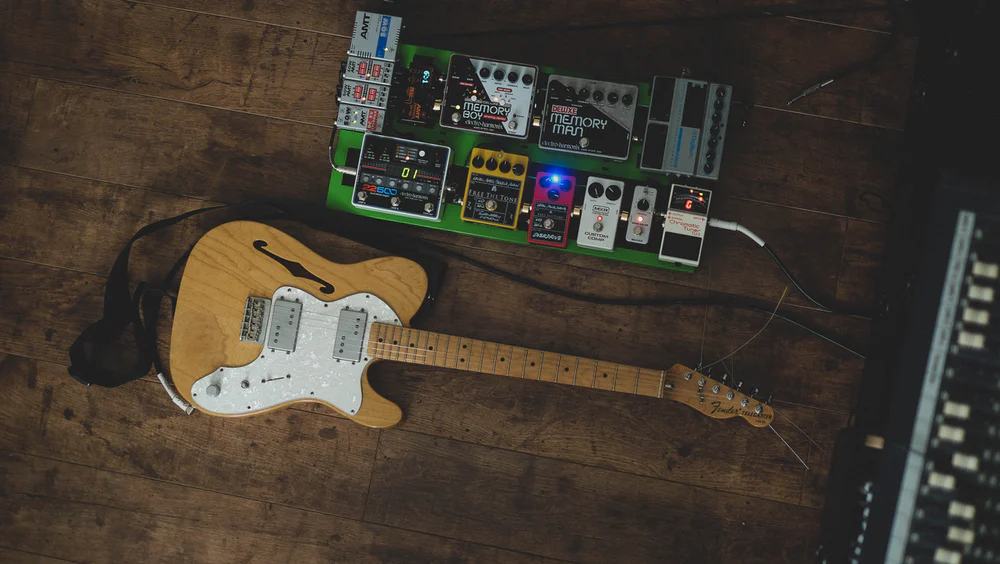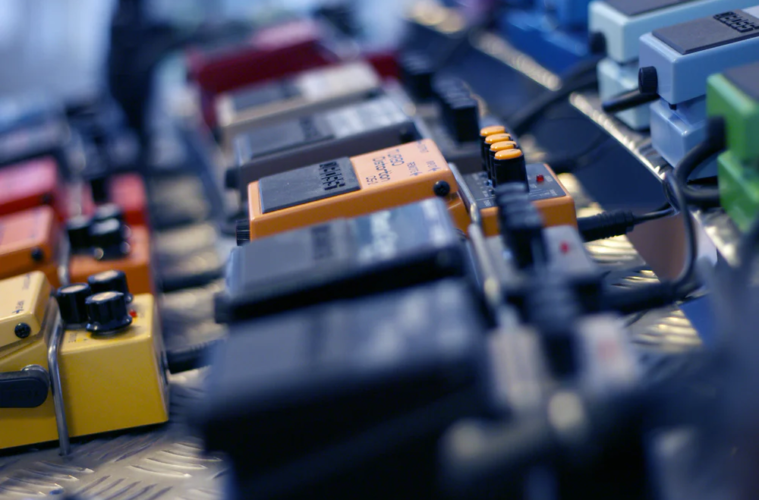Most people think that all the greatest guitar players got their unique sounds from the type of guitar they were using or special effects. To some extent, the instrument and its type affect the sound, but the real magic happens with the pedals. Like artists with their plethora of brushes or carpenters with a wide array of tools, guitar players bank on their pedals. A guitar pedal is essentially an extension that is connected between your guitar and your amplifier. While your amplifier has a few options that may help you alter the sound, guitar pedals give you tons of control over specific effects.
The best thing is that you can connect multiple pedals to your guitar and amplifier to create a completely new effect of your own. All of this is very exciting until you have to choose what to buy. There are thousands of different kinds of guitar pedals and each one of them is designed to create a different effect. Moreover, each pairing or combination creates something even more unique. To help you out with that, here are some of the best pedal effects that every guitar player should own and start with.
Distortion or Overdrive Pedals
Distortion/overdrive pedals are every guitar player’s best friend. One way or another, everyone who has ever thought of buying a guitar has wanted to sound like Malcolm and Angus Young of AC/DC. The entire appeal and grandeur of an electric guitar began from this simple effect. While overdrive is a slightly milder version of distortion, they essentially do the same thing, but distortion pedals tend to do it more aggressively. If you know any guitar players, you’d know they use the most unusual adjectives to explain the sound and effect of a guitar. With reference to that, distortion pedals are just a lot spicier and hotter than overdrives. They can give you the hardcore sound of Rock or Metal if you want to rock out.
Delay Pedals
Delay pedals are slightly more technical and less thrashy when compared to distortion pedals. However, these are slightly harder to master because of how the sound comes out. As the name suggests, these pedals allow your sound to be played back over and over again at whatever frequency you desire. This playback feature allows you to create grand and melodic sounds from your guitar. There are multiple types of delay-based effects like the vibrato pedal. These pedals create variations in the pitch of a single musical note, and again, these variations depend on the frequency you have set. It’s always better to do some research before you buy one of these pedals. If you want to look at the best vibrato pedal, you need to sift through reviews and websites to see what kind of punch they pack. Most of these pedals have settings that help you control the speed at which the vibrato happens, the depth of the sound and how rich it is, and the tone to choose whether your guitar focuses on the higher frequencies or the lower frequencies. Moreover, the rise knob alters how fast vibrato kicks in.
Loop Pedals
Loop pedals are one of the more interesting and unique guitar pedals out there. These pedals do not alter the sound of the guitar as distortion or phaser pedals would but, as the name suggests, these pedals allow you to loop a whole progression and have it played repeatedly. This feature allows you to play complete songs using just a single guitar. You can tap the guitar to add percussions, loop it, give a groovy baseline, add some chords, and start practicing your guitar solos. Loop pedals are basically the new one-man band machine. This is one of those pedals that encourages musical and technical growth more than sound effects. By learning how to loop and creating tunes and melodies yourself, you advance as a musician in general rather than a guitarist. They improve your timing and solo entries, allowing you to get rid of the annoying metronome once you’ve practiced enough. Before you know it, you’ll be motivated to write your own songs as well.

This is a very small list and doesn’t truly give you a complete picture of the vast majority of pedals out there. These suggestions are nice for people who have practiced enough guitar to take it to the next level. It would help if you mastered working with the amplifier before adding some of your own flavors through different pedals. It can be a very slippery slope, however, because before you know it, you could be spending an insane amount of money to create 12-13 unit pedalboards like professionals do unless you keep yourself under control.


